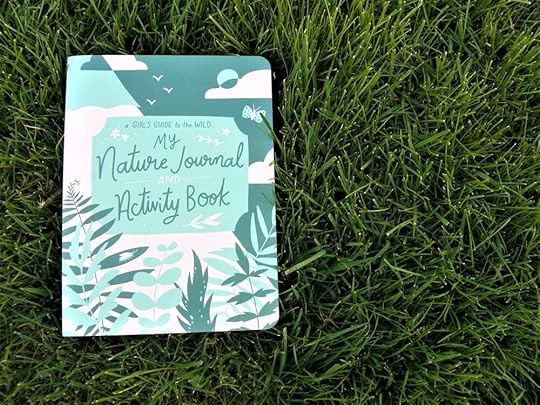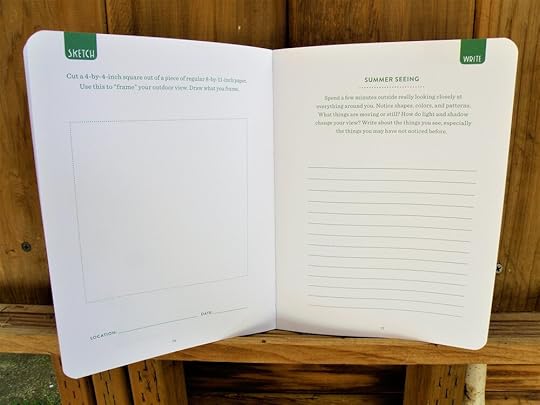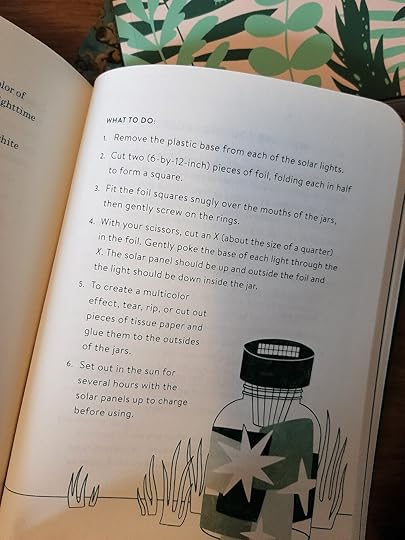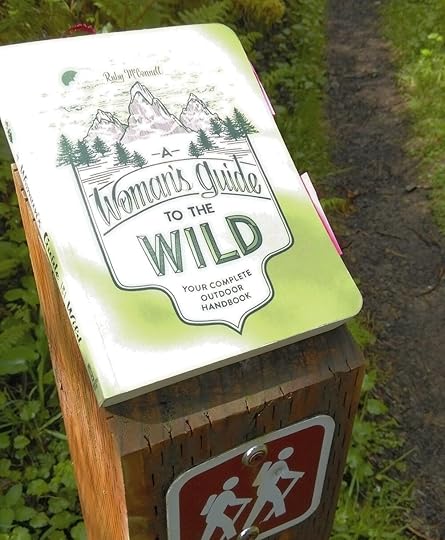Ruby McConnell's Blog
May 4, 2022
Visions of Dry Country (from a work in progress)
By the time they reached the Humboldt Sink, the cattle were nearly dead.
The Sink, the western edge of what was called the ‘40-mile desert,’ was a sandy stretch of heat and blinding light on the westernmost edge of the Great Basin. The land in the region, which extends from the Wasatch Mountain range in eastern Utah to the foothills of the northernmost Sierra Nevada mountains of California, is being slowing stretched by tectonic forces. The result of this extending of the Earth’s crust is a topography characterized by long, squat ranges and flat-bottomed valleys trending north-south, against the direction pull. The effect from an aerial view is one of stretch marks. To someone travelling such a landscape by foot, it might appear that one has crossed the same ridge over and over again, always to find another sandy basin reaching out to the north and south, always another ridge ahead to the west. Ridges and valleys, ridges and valleys.

October 26, 2021
Thoughts on a World on Fire
When people ask me about the record heat we experienced here in the Pacific Northwest this summer, I find I want to talk to them about last year’s wildfires like they’re the same thing. If you talk to locals in general, you’ll find the same thing happens with them too. Because really, after the horrors of what we’ve witnessed from the natural world in the last year, heat or fire, it’s an unimportant nuance. We all know they are symptoms of something larger, an unfamiliar and persistent dryness in rain country, endless years of drought, climate change, consequence.
The night the fires started my husband and I were woken up by the sound of the ashy wind against our window. When we opened it to see what was happening so much smoke filled our room we thought the tree in the back yard was on fire. We got up two hours later, just before 4 am. By then, news of the fires some 50 miles away had made its way to social media. As people scrambled to escape it gulped in land in thirsty ten-mile chunks, closing in towards us fast. That first fierce burn slowed after the first day, but we wouldn’t leave our home for close to two weeks as we waited out the worst air quality in the world. No one knew what to do. The community scrambled to create makeshift air filters out of fans and purge their houses of toxins. Some advice was better than others. Few people took action to protect property from urban fire, even though we found quarter-sized chunks of embers on our front lawn.

In the days before the heat, I sat in the cool shade of my garden with a visiting scholar who had come to write about the fires, recovery, and hard hope. We spoke after he had spent several days interviewing stakeholders upriver, attending planning meetings for the recovery zone, and talking with resident forest service scientists. He told me he heard stories of fear, of confusion, and of determination. I told him the burn zone was prettier before the salvage clear cutting. He told me that of all the people he heard from, I was the only one asking if we should be rebuilding. If we should be trying to return to how we were inhabiting and using that land.
When the heat came this year, people died and we knew they would. For days leading up to the highs of 111, 116, 118, my 74-year-old mother fretted about the power grid, convinced it would be overwhelmed and she would lose power. I told her she would be ok. I reminded her we had talked about getting a generator after the ice storms in the winter. She resisted. She fretted. Two days later, the power went out.
When the smoke came and the evacuation zones crept toward my parents’ house, it scared them into action and my sister broke the quarantine bubble to come for them. When the heat came, knowing that my sister didn’t have air conditioning, they played scrabble as the heat crept in through the cracks. In fairness, my mother has lived in Portland for most of her life and stoicism paired with scrabble or a jigsaw puzzle has seen her through many a freezing storm. But heat is different and she is old (sorry mom) and its not just the infrastructure that is unprepared for these things, its us.
These events, these consequences, they do not happen in the abstract. They are real and they are personal. Our response needs to be too. The new normal, the reality of climate change, it’s going to require a new skills-set, one that involves go bags and masks and evacuation routes and safety check-ins, bottled water, and sheltering in place. Survival skills. But survival isn’t the goal. Thriving is the goal. For that, we have to fight. And if the consequences are personal, the fight should be too. Like our go bags, we all need a personal plan for how we will contribute to that fight in our own lives based on our own unique and valid relationships to the environment. The signals are clear, the time for action is now.
May 3, 2021
The Nature Journal
Last year, at the beginning of the pandemic, I released the sister book to the Girl’s Guide, a full volume of activities, logs, and journal pages for curious and adventurous kids. I got a little lost in the shuffle then, but the persistent need for these kinds of books is real. Because we know how important it is in these times not just to send the kids outside but to send the kids outside and know that they have a way of engaging with the world around them in an independent and inquisitive way. That was the goal of the Nature Journal and Activity Book. Word searches, games, weather logs, scavenger hunts and writing prompts all with an eye to the outside, no matter if your view is from a city window or a country field. Let’s give them the tools they need to thrive in this time.




April 21, 2021
Summer Project
Build Solar-Powered Mason Jar Lanterns
“Camp lanterns are usually designed for maximum illumination, which is great if you’re trying to cook or set up camp after dark, but not so great if you just want some light to keep you from tripping on things at night. For a prettier (but still useful) illumination, try making these beautiful solar-powered lanterns.” A Girl’s Guide to the Wild



April 7, 2021
Let Them Eat GORP
One of my goals for A Girl’s Guide to the Wild was to create activities that could be completed successfully with as little help or expense from parents as possible. While those kinds of activities serve as great breaks for parents, they also teach a kind of self-reliance and problem solving that kids need in order to thrive.
GORP is a great food to practice things like gathering ingredients, measurement, storage, and cleanup. And it can be as healthy or sweet as you want, making it a solid staple in the pantry or outside.

March 24, 2021
Send the Kids Outside
These days, it goes without saying that the kids have never needed to go outside more, so for a few weeks I’m sharing content from the Girl’s Guide to the Wild and its sister book, My Nature Journal and Activity Book as a way of helping us gear up for the warmer weather.
When I wrote the Girl’s Guide to the Wild, I wanted to include examples of outdoor women that related to each of the chapters. These brief biographies proved to be some of my favorite parts of the book.
“Mary Anning- Fossil Finder
Mary Anning was a pioneer of paleontology (the study of fossils), even though she grew up in a poor family in the south of England, never traveled the world, and wasn’t allowed into the Geological Society of London because she was a girl. Mary’s knowledge of fossils grew from her near-daily walks along the sea cliff near her home. She found the first prehistoric fossils in the early 1800s, and scientists from around the world came to see her collection and learn from her. Her fossil collection became so famous that she became the inspiration for the tongue twister, ‘She sells sea shells by the sea shore.” A Girl’s Guide to the Wild
#agirlsguidetothewild #books #middlegrade #STEM #STEMbooks #outdoorkids #camping #STEMgirls #bookstagram #middlegradebooks #kidlit #homeschool #outdoors #camp #activities #outdoorfamily #playoutside #kidsbooks #activitybook #scouting

March 17, 2021
The Bear Myth
“Every time we set up in bear country, some guy would go on and on about how none of the women had better be menstruating because he did not want to have to save us from a bear. This would also typically be the same guy who would roast hot dogs on the fire all night, ensuring every meat-eating animal within a square mile knew where we were camped.
Modern guides, while universally agreeing that the “menstruation attracts bears” story is a myth, typically go on to perpetuate it, emphasizing odor control and discreet disposal. Why this is considered a bigger problem that any other bathroom waste you might be carrying, I have no idea. I think it says more about a pervasive lack of understanding and continued squeamishness of our male counterparts than anything else.” A Woman’s Guide to the Wild

March 10, 2021
The Dirt
“I think that the deeply ingrained message that we are not supposed to get dirty ranks high among the reasons for the particularly large disconnect between American women and the wilderness. American women are not supposed to sweat, carry heavy things, be able to read maps, be seen without makeup or knowhow to build a fire. The truth is that when you go outside, your hair gets messed up, you huff and puff up hills, you sweat in the sun, get burned, and squat behind bushes- sometimes peeing on your shoes. You get covered with dust., sit directly on the ground, and get tangled in the overhanging brambles. It Is not always pretty.” A Woman’s Guide to the Wild

March 3, 2021
The Pink Oompa-Loompa
“Outdoor gear manufacturers are under the mistaken impression that grown women, like four-year-old girls, loved to be swathed almost entirely in bright shades of hot and neon pink. Take a look at any busy city street and you will plainly see this is not true. But they make it year after year and year after year it ends up on the clearance shelf for people like me to buy at 50 percent off. It is in this way that I have acquired bright-pink fleece hoodies and gloves, a raspberry puffy coat, pink ski pants, and pink-lined snow boots, making me, at times, appear exactly as outdoor companies presumably see me, a giant, albeit discounted, pink Oompa-Loompa.” A Woman’s Guide to the Wild
February 24, 2021
Five Years of A Woman's Guide to the Wild
This spring marks the fifth anniversary of the publication of A Woman’s Guide to the Wild. I’ve been honored, over the last five years, to talk to many readers and adventurers and solace seekers and to listen to your stories about the wild places in your lives. It’s clear to me that the notion that everyone’s outdoor experience is both unique and valid is more important than ever. It’s also clear that our outdoor spaces are and will continue to be places of safety and refuge in pandemic times. So all spring, I’m dedicating this space to content from the Woman’s and Girl’s Guides, sharing with you some of the content that laid the foundation for the work I do now. I hope you enjoy it! Thanks for reading, go find your wild. Don’t give up.
“For the approval of men, I have gone on trips in places and climates for which I was terribly unsuited- chugging through canyon country, or scrambling the edges of ice fields dressed for an easy day hike. I- a fully competent river canoer and rafter- have nearly drowned on several occasions because I was too timid to assert myself and take the bow, instead letting little more than male bravado steer the boat. I have spent sleepless nights freezing because a male companion forgot the bedding or simply brought a light blanket for temperatures that I require a zero-degree bag to tolerate. I have sat and fretted for hours about stray sparks near a campfire being fed dangerous amounts of fuel and wood in the dry days of August. I have worried for days before a trip, hoping I would keep up, hoping the weather would hold out, and worried that expressing my doubts would cast me as unqualified for the adventure. I often wondered why there wasn’t a book about being a woman in the outdoors. If it had not been for a steady stream of female mentors and a willingness to learn things the hard way, I might have given up.” A Woman’s Guide to the Wild




